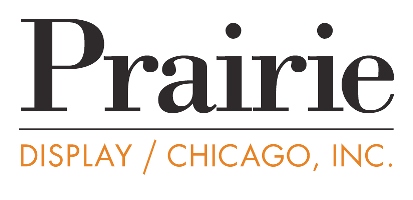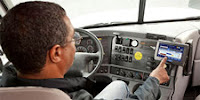“I just want to remind you that ELDs are here, as of December 18,” Joe said.
“ELDs?” I was a bit puzzled. “What are they?”
Joe went on to explain that Electronic Logging Devices (ELDs) are coming to the trucking industry. “They are mandatory and will have a big effect on trade show shipping.”
Sure enough, effective December 18, 2017, the U.S. Department of Transportation mandates that all long distance truck drivers replace the old method of paper logs with electronic devices that will log driver time based on engine running time. ELDs will effectively catch commercial drivers who ignore federal hours-of-service rules.
Joe explained that a driver can only haul for 11 hours, and then must take a 10 hour break. That’s been the rule for many years, but it’s widely violated by drivers using hand-written logbooks. “Where this will have major impact,” he said, “is that wait time will now be included in the drive time.”
“Trade shows are uniquely positioned to be impacted because of the fundamental lack of understanding about transportation transit and driving time by our industry,” Joe continued. “We are kind of the least sexy part of the show, so people understand the least about us. We are a necessary evil in some people's minds, rather than a value added component.”
Joe also thinks it may drive some firms out of the industry, simply because they will not want to mess with the wait times and the loss of driver hours. “Drivers enjoy being paid for wait time, but where they make their money is turning miles,” he said. “If we experience a driver shortage, even greater than currently exists, the drivers will have even more leverage to demand increased dollars for show moves, raising trucking prices in our sector.”
The plus side is that ELDs will save lives, according to Lane Kidd, Managing Director of the Trucking Alliance, a coalition of freight and logistics companies that supports various safety and security reforms. “Trucking companies and their drivers have a moral and ethical responsibility to protect the general public. A motorist should be assured that the truck driver operating that semi within a few feet of his car is properly rested, drug- and alcohol-free, well-trained, and complying with the law,” Kidd said.
So what does it really mean for our customers who use long distance carriers to move their properties in and out of trade shows?
There are a number of considerations:
-Choosing a transportation partner, that understands the nuances of trade show transit, is more important than ever to ensure your properties arrive safely and on time.
-Plan ahead and try to use the advance warehouse shipping destination as an option. Ben Franklin wasn’t kidding, time really is money!
-Weight and size are also money. Opt for lighter-weight materials on your builds, like the newer, thinner aluminum extrusion and foldable, rollable fabric graphics.
-Understand the new mandate and how it effects shipments of more than 500 miles. If you ever experienced a shipment magically arriving at a distant location in a relatively short period of time, with ELDs and wait times, maybe not so much in the future.
One of the aspects I really like about our industry, is you really do learn something new each day. It’s usually something that helps us bring added value to what we do for our customers, either by sharing and educating, or, as was the case with learning about ELDs and wait times, something to anticipate in the planning process.
Plus he brought donuts.
Thanks Joe.
Steve Moskal













































